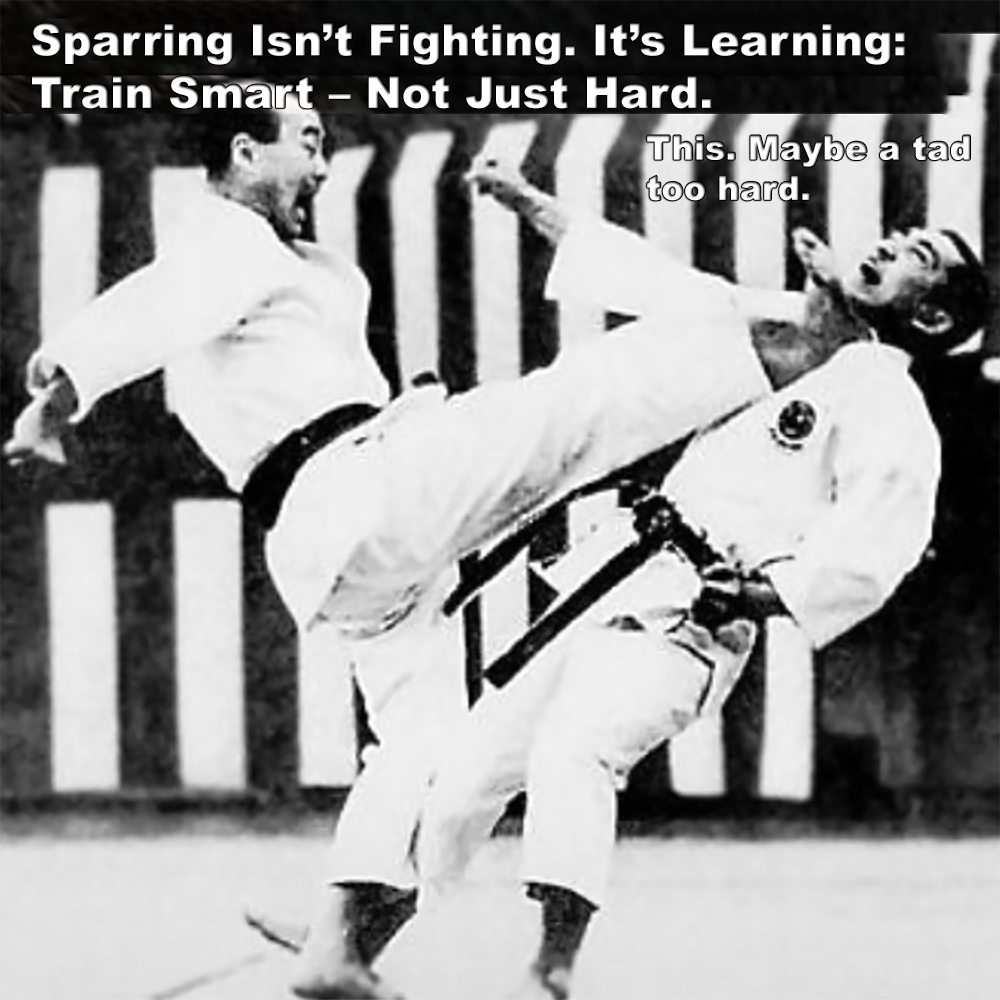
(Approx 2 minute 30 second read)
I write a lot about self-defense. Really? Yes, because it’s my priority now.
.
However, back in the day I loved to compete. It was great fun, and because at the time that’s all most people were interested in, fighting and sparring, it had to be done.
.
Sparring is essential in any fighting art, whether for competition or, yes, I’m going to say it, general self-defense.
.
But as I mention in almost all of my articles, context is everything. Clarity of purpose.
.
Techniques that work for kumite or dojo sparring are not always sensible choices for self-defense.
.
So for this article, let’s remove the self-defense aspect and concentrate purely on general fun karate, traditional, tournament, and sport karate.
.
Sparring is the time when you get to test those skills against someone with the same idea and intent. It’s consensual, and the other key word here is practice.
.
It’s a time for learning and honing skills, but the skills you’re learning must match the skills needed for your goals.
.
One of the biggest mistakes people make in sparring is thinking they have to hit their partner full-on all the time. I remember visiting a dojo here where they prided themselves on having the “strongest karate”. A few of them thought they’d try and better me, give me an example of their power. They soon learned that it isn’t the martial art, but the person. This kind of thing just makes you look like a bunch of idiots.
.
One of the biggest downsides to going hard all the time is that you develop a false sense of security. If you continuously blast your partner, chances are they aren’t trying to compete with you, they’re just trying to survive. You’ll end up thinking you’re amazing when in reality you’re not.
.
Always being on top in sparring has its downfall. If you’re in control, then fine, but the moment a fight becomes more difficult, you won’t know how to turn the situation around.
.
Sparring is supposed to be for learning, but go too hard and all you’ll get is people turning away from you. In a real event (or real life), this won’t happen. That person has come to fight, and you may not know how to handle that.
.
You’re better off going lighter. If either of you gets caught with a good shot, you can analyze how and why, instead of being scared stiff of making the slightest mistake in case you get injured.
.
Another downside is people simply won’t want to spar with you. These are supposed to be your friends, remember.
.
Sparring at a steady level and letting go of your ego also allows you to practice things you wouldn’t normally use.
.
Sometimes I handicap myself when I want to work on a certain technique. I might only use my non-dominant side, or a technique I’m not keen on using, for example. Even if I’m getting panned throughout, I’ll continue with what I’m doing. I don’t allow my ego to take over and go back to what I know best just so I can be on top.
.
Situation sparring is another good one, allowing yourself to be put in certain difficult positions. Such as being trapped in a corner, against a wall, or constantly clinched, and learning how to deal with it. Oops, I’ve slipped back into the realm of self-defense again…. See the difference?
.
Being king of the mats isn’t much of an achievement really. During training and practice, you should be focused on learning and improving, not letting your ego run wild.
.
.
Written by Adam Carter – Shuri Dojo
.
.
Photo Credit: Keigo Abe Sensei Shotokan JKA
